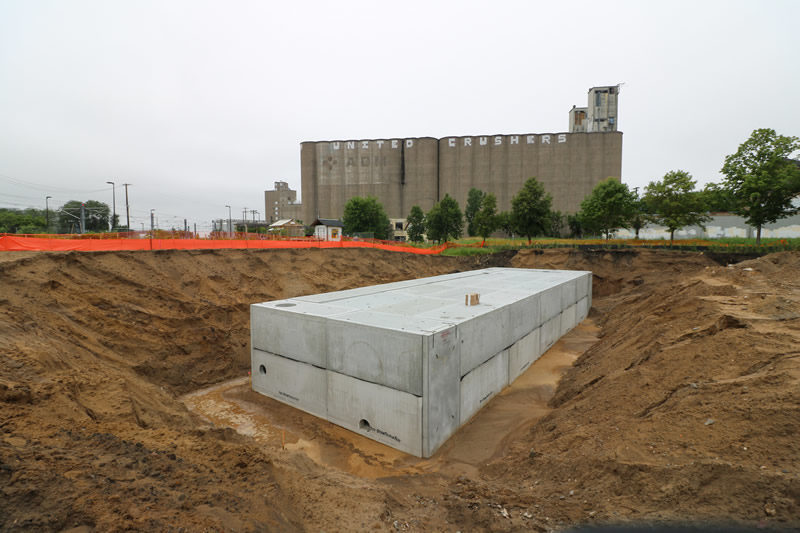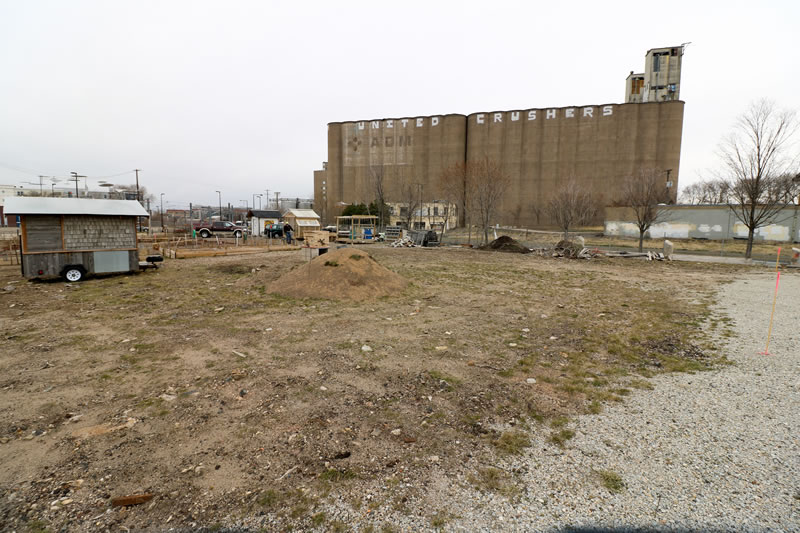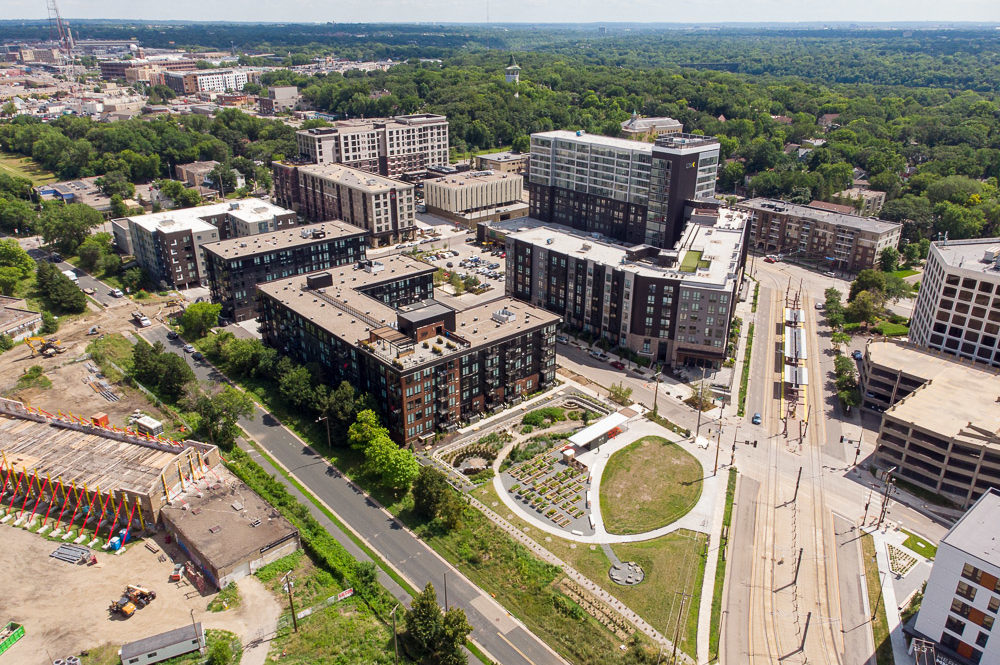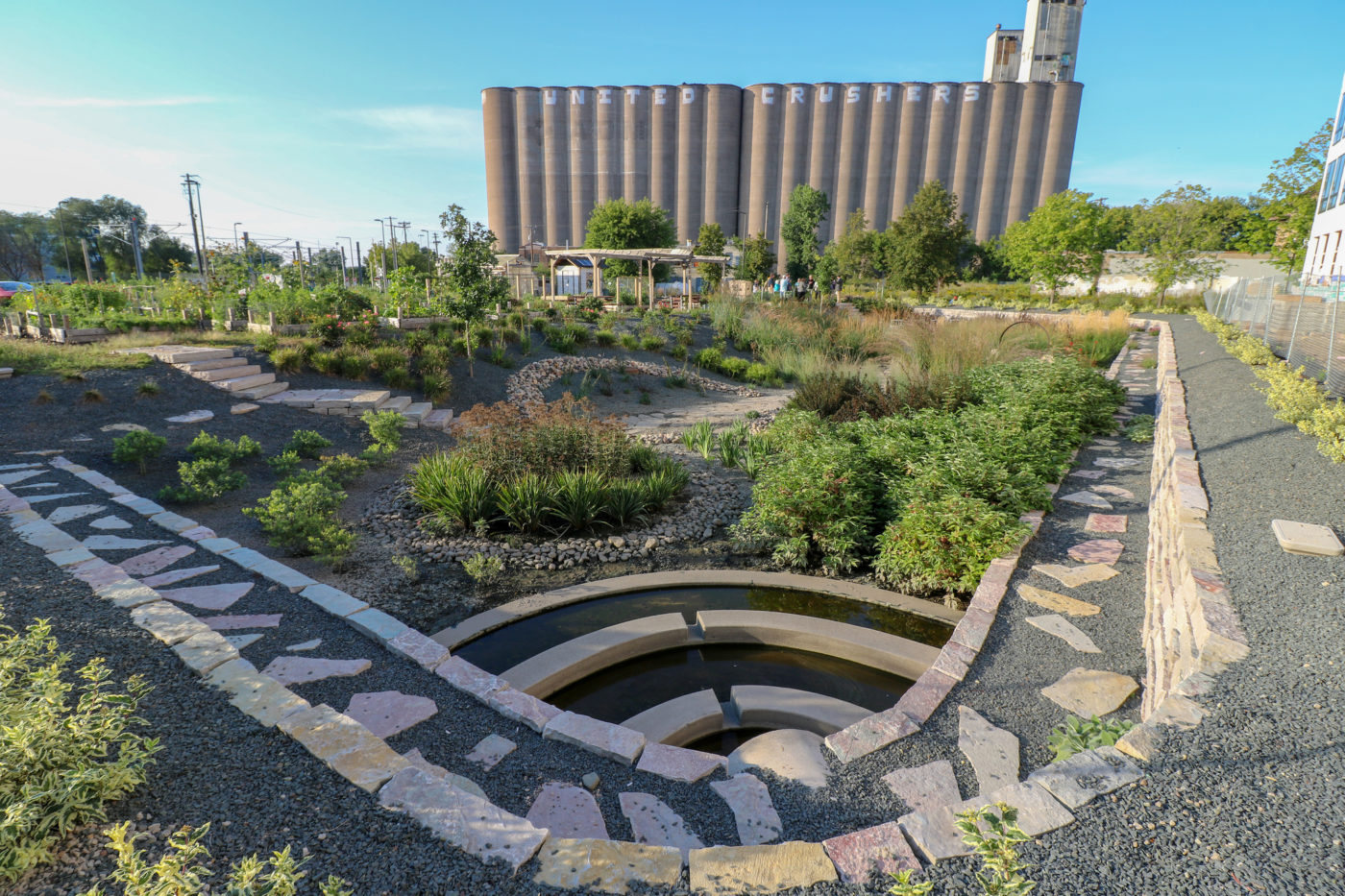Towerside District Stormwater System
This first-of-its-kind district stormwater system provides cost-effective stormwater management and reuse while providing public green space.
Project Details
City: Minneapolis
Type: MWMO Capital Project, Planning Grant
Status: Completed
Timeline: 2016
MWMO Funding: $1.3 million
Partners: Aeon; Barr Engineering; Bruce Jacobson; City of Minneapolis; The Cornerstone Group; Harlem Irving Companies; Hennepin County; MWMO; Prospect Park Properties; Prospect North Partnership; Towerside, The MSP Innovation District; University of Minnesota
Related:
Towerside District Stormwater Management
Dan Kalmon, AICP
Planning Principal
612-746-4977
Email Dan Kalmon, AICP
View Bio
The District Stormwater System at Towerside, the MSP Innovation District, captures, treats, and reuses stormwater runoff draining from a roughly two-block area next to the Prospect Park light rail station, near the University of Minnesota. In addition to keeping pollutants out of the nearby Mississippi River, the system created opportunities for reusing captured stormwater for purposes like irrigation and industrial use.
A first-of-its-kind project, the system is the result of a voluntary agreement between four private developers (owning adjacent properties) to manage stormwater runoff jointly rather than separately. This shared “district” approach to stormwater management will save the property owners money while creating more effective, cost-efficient and eco-friendly stormwater treatments. The MWMO facilitated the agreement between the landowners and provided $1.3 million to supplement the owners’ investment in stormwater infrastructure.
The stormwater system is the first of a more extensive “district system” envisioned throughout Towerside, the MSP Innovation District. The district system design integrates infrastructure to facilitate sustainability and resilience for the community while adding new public amenities like green space. The stormwater system is also a component of the larger redevelopment of Fourth Street, which is known as “Green Fourth.”
Project Background
Towerside, The MSP Innovation District, is the region’s first designated innovation district. Once a collection of neglected industrial sites, this 370-acre area spanning the border between Minneapolis and St. Paul is in the process of being redeveloped according to a community-led vision that calls for “a high-intensity, high density mix of places and spaces where working, living and innovation come together.”
A coalition of public, private and nonprofit partners is working to establish Towerside as a replicable model for sustainable urban redevelopment. Key to this model is the use of district-wide systems for stormwater management, energy, parking, parks and other amenities.
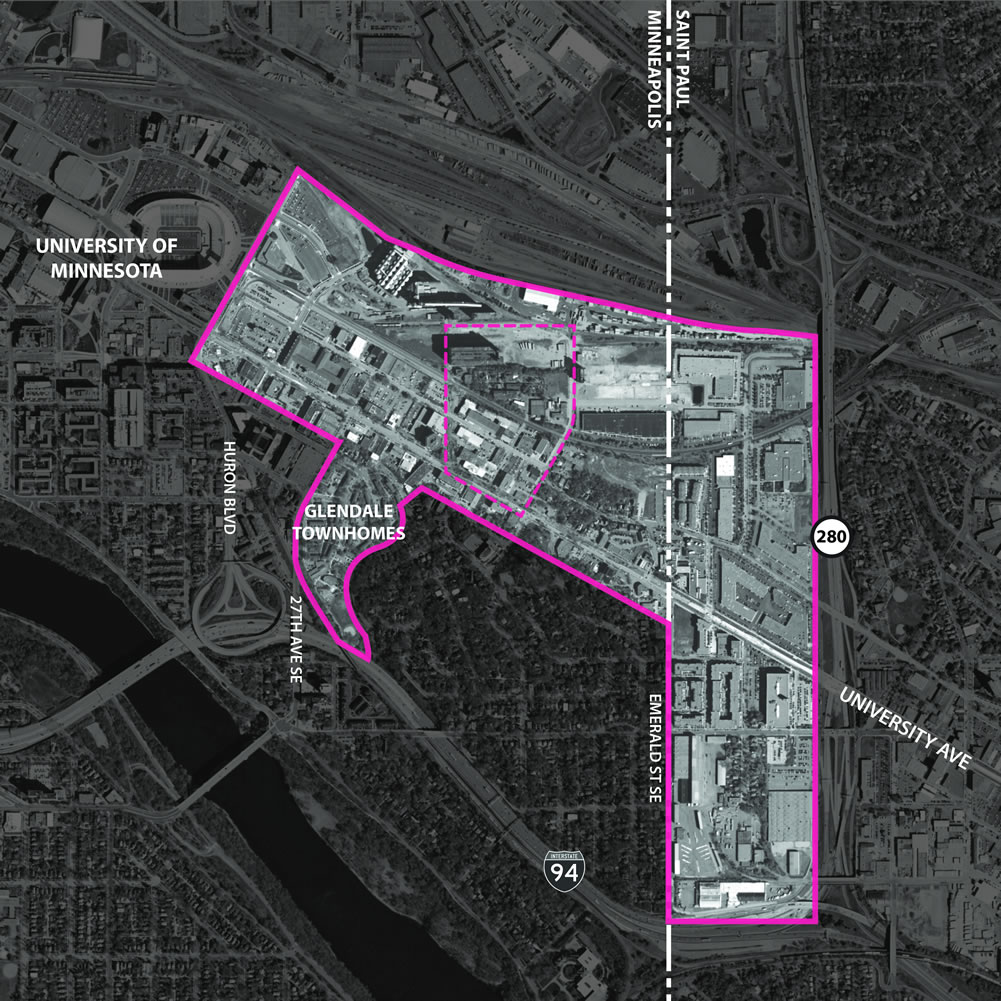
Project Planning
From the beginning, MWMO has worked with other Towerside members to guide and assist individual developers in the region towards a shared social, environmental, and economic vision. For the MWMO, this has meant working with multiple developers to implement a stormwater treatment and reuse system that also adds public open space to the district. This district approach developed new innovative stormwater practices that cross property lines, create cost efficiencies, and produce a variety of economic and environmental benefits for the community.
The MWMO worked with the City of Minneapolis and private developers within the area, leading an effort to plan and design a district stormwater system that would capture and treat runoff from a two-block area. By June 2015, the MWMO completed a conceptual plan for a district stormwater reuse system, and by March 2016 a final design was ready for bid. This effort was timed so the first redevelopment project could hook up to the system without providing its own stormwater treatment on site.
The result of this effort is the Towerside District Stormwater System, which comprises a pair of biofiltration basins connected to a 206,575-gallon underground storage tank. Together, these features capture, treat and hold stormwater runoff from an approximately 8-acre area so that the water can be reused.
In addition to providing $1.3 million to fund the system, the MWMO facilitated the first-of-its-kind agreement between the four participating landowners. The agreement defined the landowners’ financial contribution to the system and allows them to manage their stormwater jointly, sharing in the system’s benefits. One of these benefits was a cost savings. An MWMO study found that using a district system to manage their stormwater saved the developers 15 percent. Based on the agreement, these savings will now be turned around and put back into the system. A portion of the funds will be used to pay for maintenance; the remainder were placed in a grant fund, which the landowners can access to help finance projects that bring the reuse water back into their development.
System Expansion
Since coming online in 2016, the district stormwater system has expanded, with two additional properties signing up to access the district’s reuse system. We have also worked to extend the open space and habitat impacts of the system by planning and financing landscape improvements in the boulevards of four additional blocks along 4th Street SE, west of the stormwater system. This 4th Street SE landscaping project provides corridors of habitat connectivity between larger green spaces planned in the region, and reuses filtered stormwater for irrigation of the right of way plantings.
With the planned redevelopment of the Malcolm Yards properties — located north of the University of Minnesota Transitway — the MWMO is now looking toward a second phase of district stormwater implementation. MWMO staff are working with Barr Engineering Co., the Yorth Group, Bruce Jacobson, and Wall Properties to investigate options for managing stormwater in this 22-acre area. Initial, high-level concept plans include a system of surface conveyance and storage through greenways connected to multi-use trails. The greenways would treat the “first flush” of stormwater runoff during a rain event and convey excess runoff to stormwater basins and/or underground storage, where it could be reused.
Learn More
Green Infrastructure Case Study: Mississippi Watershed Management Organization Towerside District Stormwater System (Minnesota Stormwater Manual)
Photos

